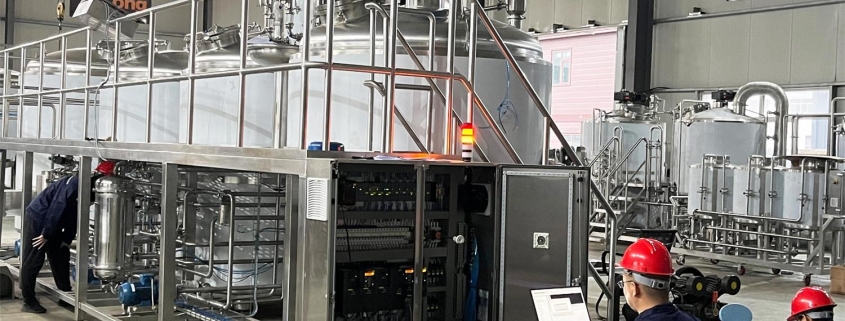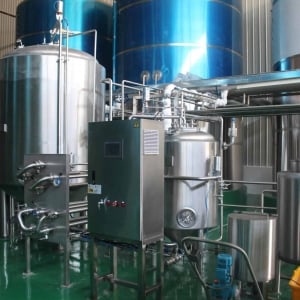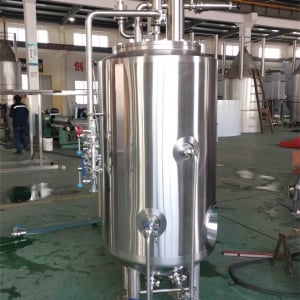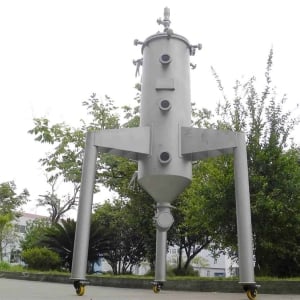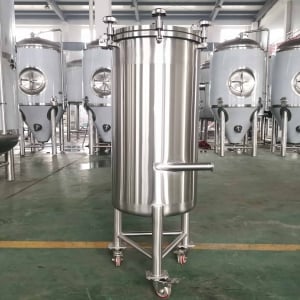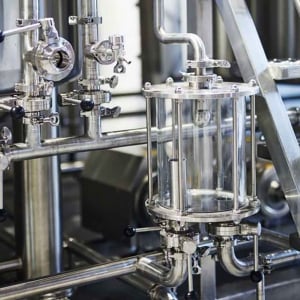Nano Brewery: Starting Small-Scale Brewing
Nano breweries have emerged as a unique, exciting opportunity for beer enthusiasts looking to break into the craft brewing scene. They provide a perfect middle ground between homebrewing and full-scale commercial brewing. But what exactly is a nano brewery, and how can you successfully establish one? This guide dives deep into every detail — from the brewing process and equipment requirements to choosing suppliers, troubleshooting problems, and understanding the advantages and limitations.
We’ll also walk you through critical tables and tips for installation, operations, and maintenance. By the end, you’ll have everything you need to get started and scale efficiently.
What Is a Nano Brewery? An Overview
A nano brewery is essentially a small-scale brewery that typically produces no more than 3 barrels (or 93 gallons) of beer per batch. It’s the smallest commercial brewing operation and often serves as a stepping stone for homebrewers aspiring to go pro. Unlike microbreweries, which can produce hundreds of barrels annually, nano breweries often focus on hyper-local markets, supplying small taprooms, local pubs, or direct-to-consumer models.
Nano breweries thrive on creativity, experimentation, and community connections. The small size allows brewers to test unique recipes, cater to niche audiences, and gradually grow without requiring a massive upfront investment. Think of it as planting seeds — small but with the potential to bloom.

Why Start a Nano Brewery? Advantages and Opportunities
Starting a nano brewery offers several benefits, especially for those passionate about craft beer:
- Lower Startup Costs: Nano breweries require minimal capital compared to large breweries. You can start with a small brewing system and grow as you generate revenue.
- Flexibility and Creativity: With smaller batch sizes, brewers can experiment with unique flavors, seasonal beers, and innovative styles without risking large losses.
- Local Market Appeal: Nano breweries often target a local community, fostering strong customer loyalty and providing fresh, high-quality beer.
- Scalable Model: A nano brewery allows you to test the waters. Once demand grows, scaling up to a microbrewery or larger production is feasible.
- Control and Personal Touch: Unlike large breweries, nano operations offer brewers hands-on control over every aspect of the process, ensuring consistency and quality.
That said, nano breweries also face some limitations. These include lower production capacities, reliance on niche markets, and more hands-on labor. However, the pros often outweigh the cons for craft beer enthusiasts looking to make a mark.
Key Equipment for a Nano Brewery
The backbone of any brewery is its equipment. Let’s look at the core components of a nano brewery:
| Equipment | Description | Capacity Range |
|---|---|---|
| Brew Kettle | Used for boiling wort during the brewing process. | 1–3 barrels (31–93 gallons) |
| Mash Tun | Converts starches to sugars during mashing. | Sized according to brewing needs |
| Fermenters | Vessels where the beer ferments and matures. | 1–3 barrels |
| Bright Tank | For carbonating and conditioning the beer. | Similar to fermenter capacity |
| Kegs and Bottling | For storing and distributing the finished beer. | Various sizes: 1/6, 1/4, or 1/2 keg |
| Cooling System | Maintains fermentation temperatures. | Varies depending on fermenter size |
| Pumps and Piping | Move liquid between tanks during brewing. | Durable, food-grade systems |
| Cleaning Equipment | CIP (Clean-In-Place) systems for sanitation. | Based on system size |
Customizing Your Nano Brewery Layout
When designing your nano brewery, space optimization is critical. Breweries need to fit into compact spaces like basements, garages, or small industrial units. Here’s what you need to consider:
- Layout: Position your brew kettle, fermenters, and bright tanks efficiently to minimize movement and maximize workflow.
- Customization: Consider custom fermenters or compact brewing systems tailored to small spaces.
- Workflow: Design the layout to follow a logical brewing process — mashing, boiling, fermenting, conditioning, and packaging.
The Nano Brewery Brewing Process
Here’s a step-by-step breakdown of the nano brewery brewing process:
- Mashing: Malted grains are mixed with hot water in the mash tun to convert starches to sugars. This process creates the wort.
- Boiling: The wort is transferred to the brew kettle, where it’s boiled, and hops are added for bitterness, flavor, and aroma.
- Cooling: After boiling, the wort is rapidly cooled using a heat exchanger to prepare for fermentation.
- Fermentation: The cooled wort is transferred to fermenters, and yeast is added. The yeast converts sugars into alcohol and CO2, creating beer.
- Conditioning: After primary fermentation, beer matures in fermenters or bright tanks. Carbonation may also occur at this stage.
- Packaging: Finally, the beer is kegged, bottled, or canned for distribution.
Troubleshooting Common Issues with Nano Brewery Fermenters
Fermenters are the heart of the brewing process, but they can pose challenges. Here’s how to address common issues:
1. Temperature Control Problems
- Issue: Fermenters are too warm or too cold, affecting yeast activity.
- Solution: Invest in a glycol cooling system to maintain precise temperatures.
2. Excessive Foam or Blow-Off
- Issue: Overactive fermentation can cause blow-off through airlocks.
- Solution: Use larger fermenters with headspace or a blow-off tube.
3. Contamination
- Issue: Unclean fermenters can lead to bacterial infections.
- Solution: Implement a rigorous cleaning and sanitizing routine with CIP systems.
4. Leaks and Pressure Issues
- Issue: Faulty valves or seals can cause leaks or pressure drops.
- Solution: Regularly inspect and maintain fermenter components.
Top Suppliers for Nano Brewery Equipment and Pricing
Finding the right supplier can make or break your nano brewery setup. Here’s a table outlining leading suppliers and price ranges:
| Supplier | Products | Price Range | Location |
|---|---|---|---|
| Ss Brewtech | Fermenters, kettles, tanks | $5,000–$20,000+ | USA |
| Blichmann Engineering | Home and small brewery systems | $3,000–$15,000 | USA |
| BrewBuilt | Custom brewing equipment | $10,000–$25,000 | USA |
| Micet Craft | Small commercial brewing systems | $15,000–$50,000+ | China |
| Stout Tanks and Kettles | Fermenters, kettles, bright tanks | $5,000–$30,000 | USA |
How to Install a Nano Brewery System
Setting up a nano brewery requires careful planning, not just in choosing equipment but also in installation. Here’s how you can efficiently install a nano brewery system:
1. Assess the Space
Before purchasing equipment, measure the available space and map the layout. Most nano breweries can operate within a 200–1,000 square-foot area, depending on batch size and additional storage requirements.
2. Utility Upgrades
Nano breweries require adequate utilities, including:
- Water Supply: Ensure access to clean, treated water for brewing.
- Electricity: Brewing systems need single-phase or three-phase power depending on equipment size.
- Drainage: Install industrial-grade drains for proper wastewater management.
- Ventilation: A ventilation system is essential to handle steam and maintain air quality during boiling.
3. Equipment Placement
Place key components — mash tun, brew kettle, fermenters, and bright tanks — in a workflow-friendly sequence. Allow room for cleaning and maintenance access.
4. Plumbing and Piping
Install food-grade pipes and pumps to move liquid between brewing stages efficiently. Use stainless steel or sanitary plastic fittings to maintain quality and sanitation.
5. Testing the System
Once installed, run a test brew with water to check for leaks, pressure issues, or incorrect connections. Troubleshoot and resolve any problems before brewing your first batch.
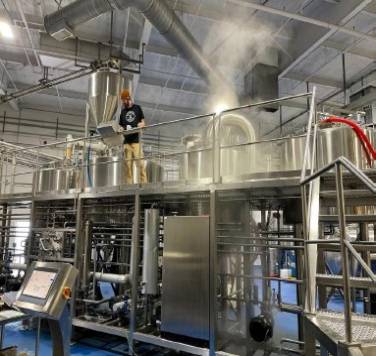
How to Operate a Nano Brewery
Operating a nano brewery requires attention to detail and consistency. Here’s a breakdown of day-to-day operations:
1. Preparing the Ingredients
Gather your grains, hops, yeast, and water. Weigh and prepare the ingredients according to your recipe.
2. Brewing the Beer
- Heat the water in the mash tun and mix with malted grains to start the mashing process.
- Transfer the wort to the brew kettle for boiling. Add hops at various intervals for bitterness, aroma, and flavor.
- Cool the boiled wort using a heat exchanger to reach fermentation temperature.
3. Fermentation
Add yeast to the cooled wort in the fermenter. Monitor temperature and gravity over several days to track the fermentation progress.
4. Conditioning and Carbonation
After fermentation, transfer the beer to a bright tank or keg for conditioning. Add CO2 to carbonate the beer.
5. Packaging
Package the beer in kegs, bottles, or cans for distribution. Label your product and ensure it complies with local laws.
Nano Brewery Maintenance: Keep Things Running Smoothly
Maintenance is vital to ensure equipment longevity and beer quality. Here’s how to maintain your nano brewery:
| Task | Frequency | Details |
|---|---|---|
| Cleaning Mash Tun and Kettle | After Every Brew | Use CIP systems with caustic cleaners to remove grain residue and buildup. |
| Sanitizing Fermenters | Before Every Use | Clean and sanitize fermenters to prevent contamination. |
| Inspecting Pumps and Valves | Weekly | Check for leaks, loose fittings, or clogs in the system. |
| Calibrating Thermometers | Monthly | Ensure temperature gauges provide accurate readings. |
| Deep Cleaning Piping | Monthly | Flush pipes with cleaning solutions to prevent bacterial buildup. |
| Servicing Cooling Systems | Quarterly | Inspect glycol chillers and clean condenser coils. |
| Tank Inspection | Annually | Conduct a thorough inspection for corrosion, cracks, or seal degradation. |
Pro Tip: A well-maintained brewery system saves money on repairs and guarantees consistent beer quality. Don’t cut corners on cleaning and inspections.
How to Choose the Right Nano Brewery Supplier
Selecting the right supplier for your nano brewery equipment is crucial. Here’s a table with factors to help you compare options:
| Factor | What to Look For | Why It Matters |
|---|---|---|
| Equipment Quality | Stainless steel, durable construction | Ensures longevity and beer quality. |
| Customization Options | Ability to tailor fermenters, tanks, and layout | Optimizes space and meets unique needs. |
| Pricing | Competitive pricing with transparent quotes | Helps manage startup costs effectively. |
| Customer Support | Responsive technical and after-sales support | Resolves issues quickly, minimizing downtime. |
| Reviews and Reputation | Positive customer reviews and testimonials | Indicates reliability and trustworthiness. |
| Warranty | Equipment warranties ranging from 1–3 years | Protects your investment. |
Nano Brewery vs. Microbrewery: Key Differences
Nano breweries are often confused with microbreweries. Here’s a comparison:
| Aspect | Nano Brewery | Microbrewery |
|---|---|---|
| Batch Size | 1–3 barrels (31–93 gallons) | 15–30 barrels (465–930 gallons) |
| Startup Costs | $10,000–$50,000 | $100,000–$1 million+ |
| Market Focus | Local, niche markets | Regional markets |
| Flexibility | Highly flexible, easy to experiment | Larger batches, less room to tweak |
| Labor | Often owner-operated | Requires staff for operations |
Advantages and Limitations of a Nano Brewery
Advantages
- Lower Costs: Affordable entry point compared to large-scale brewing.
- Experimentation: Perfect for trying new recipes and seasonal flavors.
- Local Appeal: Builds strong community relationships.
Limitations
- Limited Production: Cannot meet large-scale demand.
- Labor-Intensive: Smaller systems require more manual effort.
- Lower Profit Margins: Higher per-unit costs due to small batches.

FAQs
| Question | Answer |
|---|---|
| What is the typical cost to start a nano brewery? | Startup costs range from $10,000 to $50,000, depending on equipment size and quality. |
| How much space do I need for a nano brewery? | Nano breweries can operate in as little as 200–1,000 square feet. |
| How profitable is a nano brewery? | Profitability depends on sales volume, pricing, and overhead costs. Local markets often yield strong margins. |
| Do I need a license to run a nano brewery? | Yes, you’ll need local brewing licenses and permits to operate legally. |
| How long does it take to brew beer in a nano system? | From start to finish, it takes 2–4 weeks, depending on the beer style. |
Conclusion
Starting a nano brewery is an exciting and rewarding venture for passionate brewers who want to take their craft to the next level. While the production scale is small, the opportunities for creativity, community connection, and gradual growth are immense. By carefully selecting the right equipment, maintaining the system, and optimizing operations, you can lay a solid foundation for success.

